The Manor of Pulloxhill and Greenfield
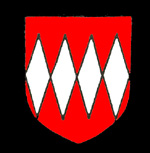
The d'Aubigny family coat of arms
The Victoria County History for Bedfordshire traced the histories of the various manors in the county. Pulloxhill was included in Volume II published in 1908. In 1086 the Domesday Book recorded that all Pulloxhill formed just one manor which was held by Nigel d'Aubigny who had two tenants named Roger and Rhiwallon. All the later manors in Pulloxhill (Greenfield was partly in Pulloxhill until 1984) can trace their history back to this holding. D'Aubigny's Barony of Cainhoe remained the overlord of the manor through the medieval period.
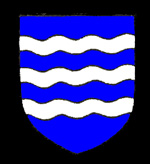
The arms of Woburn Abbey
The manors of Pulloxhill and Greenfield were created by Woburn Abbey in the 13th century. They began as a small area of land in Pulloxhill and expanded by a number of grants of more land. The first known grant to the abbey was in 1227 from Henry Buniun and comprised just 8 acres. Another 33 acres were given to the abbey by a woman named Laetitia, whose heiress Mabel and her husband Godfrey de Luvholt confirmed the grant in 1235. The Victoria County History asserts that these lands had probably been acquired by both Laetitia and Buniun from Dunstable Priory. Woburn Abbey also held land in the district directly from the priory, paying rent for the mill at Greenfield in 1234. The majority of these acquired lands were in and around the village Greenfield, though some lay in Pulloxhill. The area around Greenfield Mill remained a detached part of the parish of Pulloxhill until 1933 [CDP55] because it had been part of the manor.
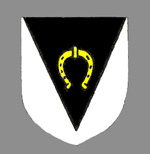
The arms of Dunstable Priory
When Woburn Abbey was dissolved in 1538 by King Henry VIII (1509-1547) the manors were taken by the Crown and leased out to various people. The first was Roger Lee in 1539.
In 1623 Edmund Page conveyed the reversion of both manors (following the eventual death of John Page) to Richard Norton who alienated them in 1626 to Peter Duckett. In 1643 Sir William Briers was Lord of the Manors, having married Anne, daughter of Noah Duckett. Briers died in 1653 and the manors were each divided between his heiress (perhaps his niece) Briers Crofts and his second wife Arabella. In 1660 Briers' husband William Crofts joined Arabella Briers in conveying the whole of the two manors to Sir Henry Crofts as trustee, then in 1665 Briers, now a widow, joined with Sir Henry in conveying the manors to Thomas Neale who sold them to Sir John Norton and John Garrard in 1673.
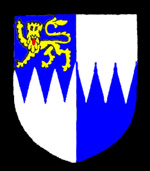
The Crofts family coat of arms
It is likely that the Coppin family of Markyate [Hertfordshire] were relatives of Sir John Norton, certainly they held the advowson of Pulloxhill church between 1686 and 1710 and both manors were conveyed, with the advowson, to the Duke of Kent by John Coppin between 1710 and 1716.
The manors remained with the successors of the Duke of Kent, the Earls and Countesses de Grey and the Barons Lucas of Crudwell into the 20th century. In the 1920s a succession of Law of Property Acts ended manorial fines and the copyhold status of land thus ending manors in all but name.
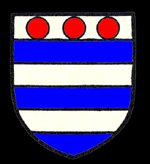 The de Grey family coat of arms
The de Grey family coat of arms
Evidence shows that the manor house lay on the site of a modern house called Fryars Herne in Orchard Road, which lies within the remains of a moat just east of the church. In 1673 Thomas Neale conveyed "the Manor or Lordship House in Pulloxhill ... now or lately in the occupation of Allen Kenyson, gentleman", along with other land, to his trustees William Daniell, Edward Taverner and George Draper [Z937/4/5]. By 1684 the house was occupied by Oliver Hale and was conveyed, again with other land, by the trustees to James Heames of London for £2,700 [Z937/4/9]. In 1693 the house, now occupied by Lewis Plummer, and other land was conveyed to Charles Nicholls for £2,450 [Z937/4/19].
By 1762 the manor house was owned by Charles Nicholls Field of Hitchin and in or around that year he sold it to John Abbot of Pulloxhill for £100 [Z937/4/25]. included with the house was "two leys of land in Fryer Hern". John Abbot died in 1791 and devised his real estate to his children [X979/1/1] and, in 1811, the eldest son, also John, bought his siblings out [X979/1/4]. By that time the manor house had been divided into five tenements, one of them occupied by the other son of John Abbot, Jonathan. By 1847 the manor house had been pulled down.